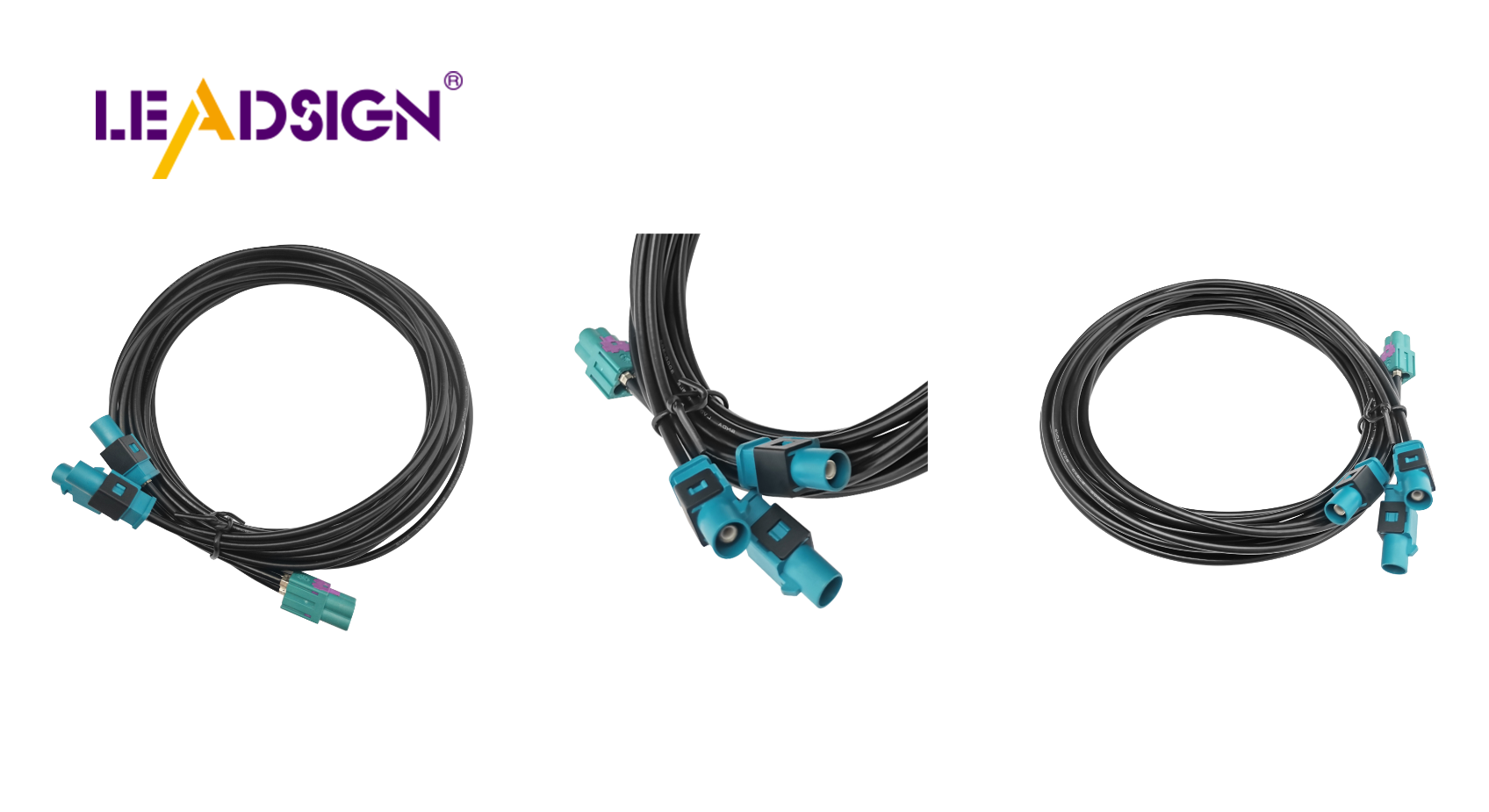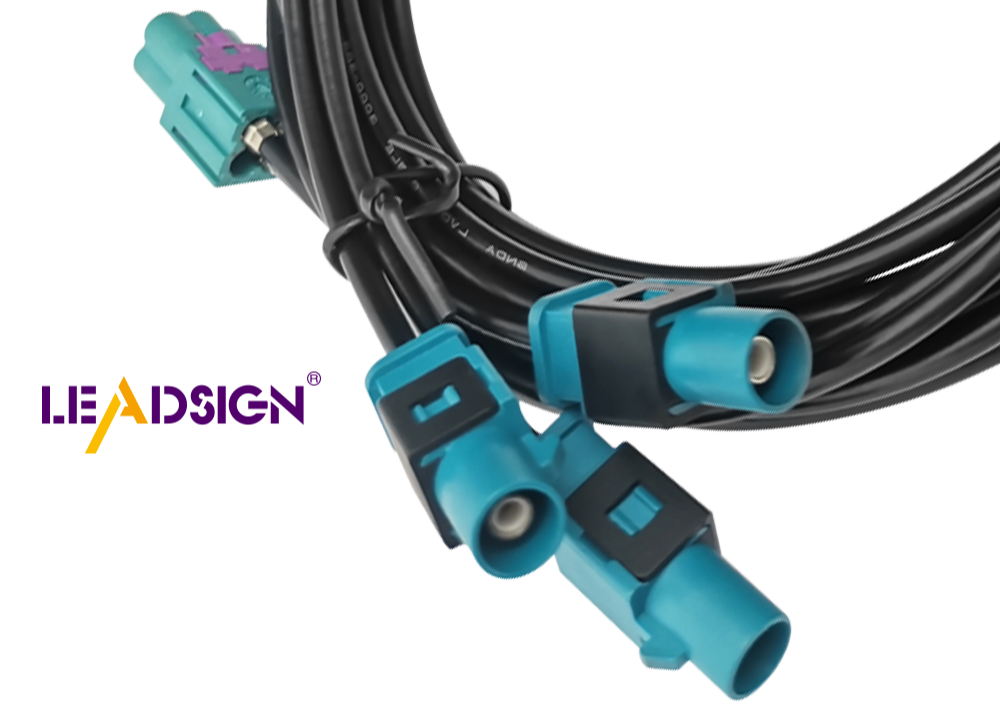Understanding Different Automotive Wiring Connector Types

Understanding different auto wire connector types is crucial for fixing cars. These connectors play a vital role in modern vehicles. A single car can contain up to 40 harnesses and 700 connectors. With the advancement of automotive technology, the demand for improved wire connectors is increasing. This is particularly important for ensuring the reliability of safety systems, which rely on secure connections. Familiarizing yourself with the various auto wire connector types is essential for optimal vehicle performance and safety.
Exploring Auto Wire Connector Types

When you look at car wiring, you find different connector types. Each one has a special job and pros and cons. Let's check out some common ones.
Screw-type Connectors
General Uses
Screw-type connectors are old but reliable. They are used where strong connections matter. These are good when wires need to be connected and disconnected often.
Advantages and Disadvantages
Advantages:
Secure Connection: Screws hold wires tightly, so they don't come loose.
Reusability: You can take wires off and put them back without breaking anything.
Disadvantages:
Time-Consuming: It takes time to set these up, especially with lots of wires.
Vibration Sensitivity: In shaky places, screws might get loose, causing problems.
Spring Clamp Connectors
General Uses
Spring clamp connectors don't use screws. They're great for quick wire hookups.
Advantages and Disadvantages
Advantages:
Quick Installation: Wires go in fast without tools, saving time.
Vibration Resistance: They stay tight even if things shake around them.
Disadvantages:
Limited Wire Sizes: Not all wire sizes fit in them.
Higher Cost: They cost more than screw-type ones.
Insulation-Displacement Connection (IDC)
General Uses
IDC connectors are fast and easy to use. You don't have to strip the wire first, which is handy for making lots of connections quickly.
Advantages and Disadvantages
Advantages:
Labor Savings: No stripping means less work time needed.
Consistent Connections: They give steady links, good for small currents.
Disadvantages:
Current Limitations: Not as strong as crimping for big currents.
Durability Concerns: The link might weaken over time in tough spots.
Knowing about these auto wire connector types helps you pick the right one for your car projects. Each type has its good points and bad points, so choose based on what you need and where you'll use them.
Recognizing Features of Auto Wire Connector Types
When working with auto wire connectors, knowing their features helps. Let's look at some important parts that help you know these connectors.
Keyways
What They Are and Why They're Important
Keyways are small cuts or slots on connectors. They make sure connectors fit the right way. This stops wrong connections, which might cause electrical problems. By lining up connectors correctly, keyways make cars safer and more reliable.
Safety Boost from Keyway Feature in Connectors: The keyway feature boosts safety by stopping wrong connector matches, lowering electrical dangers.
Where You See Them
You see keyways in connectors for important systems like airbags and ABS brakes. These systems need exact connections to work well. Keyways help you fit everything right, cutting down mistakes.
Pin Count and Rows
Why They Matter When Choosing Connectors
Pin count and rows are important when picking auto wire connectors. Each pin is a spot for electric signals to connect. More pins mean more complex links. You must pick connectors with enough pins for your car's wiring needs.
Usual Setups
Connectors have different setups, like single-row or multi-row designs. Single-row ones are simpler for basic jobs. Multi-row ones handle harder tasks, like music systems. Knowing these setups helps you choose the right connector.
Color and Gender
How They Help Identify Connectors
Color and gender help identify auto wire connector types a lot. Makers use colors to show special jobs or power levels. Gender means if a connector is male or female, showing how they join together. Knowing these helps you match them fast.
Rules in the Industry
Industry rules say how to use colors and gender in connectors. For example, black might mean ground connections; red could mean power. Knowing these rules makes sure you connect things right, avoiding mistakes.
By learning about these features, you can work with many auto wire connector types easily. Whether it's keyways, pin setups, or color codes, each part helps your car's electric systems run well.
Mechanical Considerations for Connector Selection
When picking car wire connectors, think about their strength. Let's look at two main things: how they handle shaking and rust.
Vibration Resistance
Why It Matters in Cars
Cars shake a lot when driving. This shaking can make connections loose, causing problems. You need connectors that stay tight during these shakes. Vibration-resistant connectors keep your car's parts working well.
Testing and Standards
Makers test connectors to see if they handle shaking. They follow rules to check performance under stress. These tests show if connectors will work when needed most. Picking tested connectors means safety for your car.
Corrosion Resistance
Weather Challenges
Cars face tough weather like rain and snow. These can cause rust, weakening connectors. Rust-proof connectors last longer in bad weather. Think about the weather your car faces when choosing connectors.
Material Choices
Connector materials matter for fighting rust. Metal ones are strong and good for top systems. Makers use special stuff to stop rust better. Choosing the right materials helps keep your car's wires strong.
Spotlight on Mini FAKRA Connector
Let's explore the Mini FAKRA connector, a special kind of car wire connector. It's popular because of its cool features and benefits.
Features and Benefits
Design Details
The Mini FAKRA is small, perfect for cars with little space. Its size doesn't hurt how it works. It fits well in tight spots, using space smartly. The design has 50 Ω impedance and handles up to 20 GHz frequencies, allowing fast data transfer. This makes it great for high-tech car uses.
Performance Perks
The Mini FAKRA works really well. It can send data at speeds up to 28 Gbps, which is important for systems needing quick communication like maps and music players. It's built tough to last in cars, offering strength and long life. Its modular system saves up to 80% space during setup, cutting costs and boosting efficiency.
Uses in Cars
Where It's Used
You find the Mini FAKRA in many car systems. It's used in self-driving cars where good data flow is key. Driver help systems need these connectors too. They are also found in map and music systems for smooth performance. Backseat entertainment uses them for fast data, giving passengers a great time.
Future Ideas
In the future, the Mini FAKRA will be big in new car tech. As cars get smarter, more connectors like this will be needed. You'll see them helping new techs with car talks and safety systems grow better. Smaller, smarter connectors will keep being important, with Mini FAKRA leading this change.
By knowing about the Mini FAKRA connector's features and uses, you see why it's vital among car wire connectors. Whether building new cars or fixing old ones, this connector gives you the power and trust you want.
Knowing about different car wire connector types is important for your car's safety and how well it works. Picking the right connector means thinking about a few things:
Environment: Make sure the connector can handle where it will be used.
Normal Force: Ensure the connector stays tightly connected.
Insertion Depth: Check that it fits in the space you have.
Wire-to-wire connectors are key in handling complex wiring in today's cars.
By using these tips, you can choose connectors that give strong and good electrical links.
See Also
Essential Guide to HSD Connectors for Automotive Sector
Significance of Fakra Connectors in Contemporary Cars
Navigating Ford's Fakra Connector System

